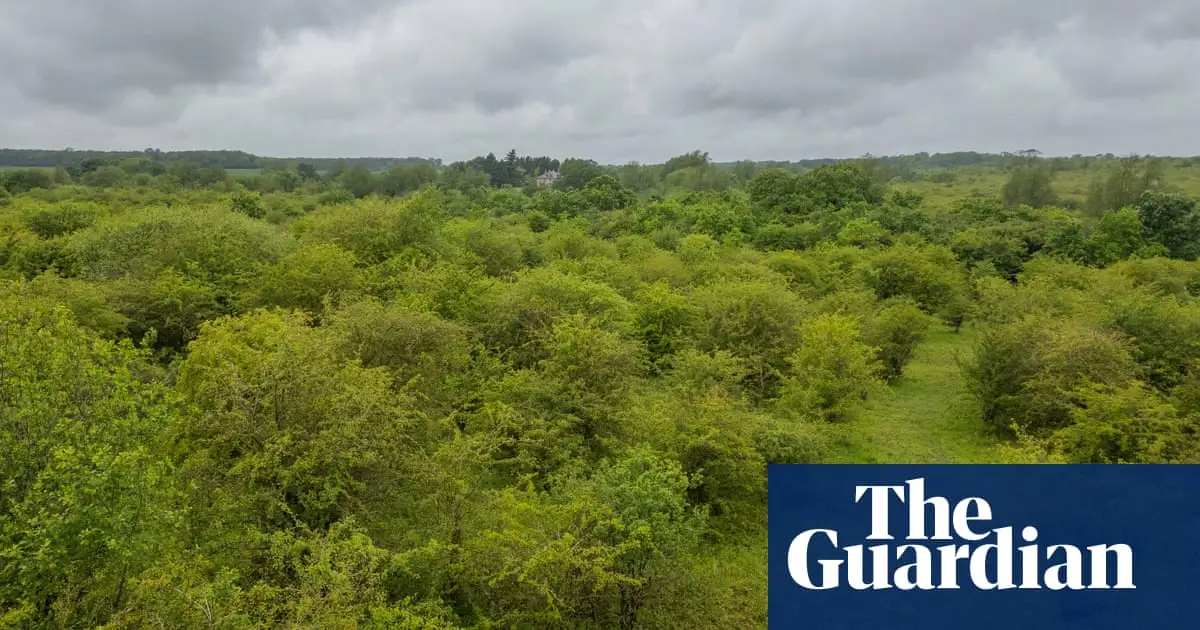When new rules in the 1980s encouraged farmers to “set aside” some arable fields from crop-growing to reduce EU-wide overproduction, Hugh White rebelled.
“He said: ‘If you don’t want my corn, I’ll put the whole lot in set-aside,’” remembers the farmer’s son, Graham White. And so in 1988, cultivation ceased abruptly on all 153 hectares (377 acres) of Strawberry Hill farm in rural Bedfordshire.
Long before “rewilding” was invented, White’s wheatfields became rough grassland and a haven for barn owls.
This is the best summary I could come up with:
Five years later, when government funding for his set-aside had finished, White appeared on the TV show Countryfile to urge the authorities to help keep his fields wild.
Strawberry Hill blossomed into a wilderness of scrubby hawthorn, blackthorn and wildflower glades – a haven for endangered nightingales, turtle doves, dragonflies, orchids and other rare wildlife in the heart of intensively farmed Bedfordshire.
Marbled white butterflies jink through sunny glades as blackcaps and whitethroats sing from groves of young oak as the Guardian explores the farm with Brian Eversham, the chief executive of BCN.
Wildflower seeds carried in the wind or distributed by birds and mammals have arrived, with bee, pyramidal and common spotted orchids popping up in grassy glades.
BCN is planning a similar management regime to Knepp, with grazing animals allowing some natural processes to be restored and help sustain the wildlife-rich mix of grassland and scrub.
The heavy clay soils at Strawberry Hill never produced high-yielding crops but Graham White remembers his father being a passionate champion for farmers receiving a fair price for their wheat.
The original article contains 1,079 words, the summary contains 178 words. Saved 84%. I’m a bot and I’m open source!



